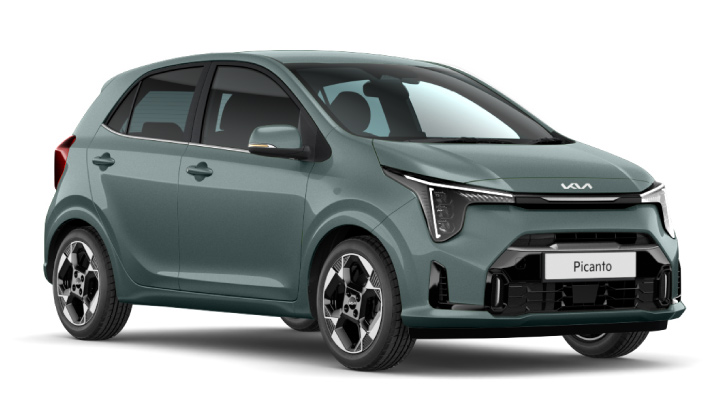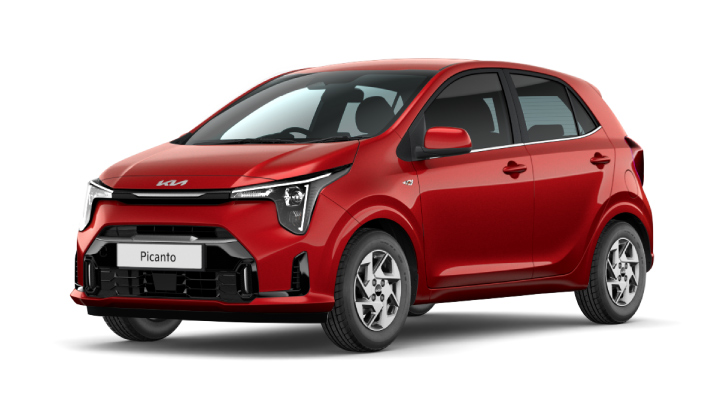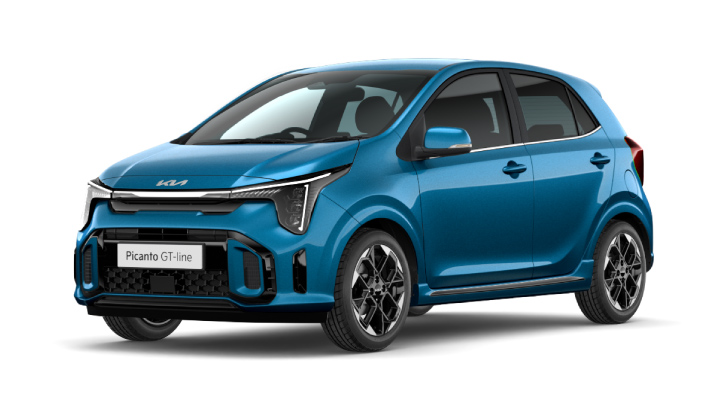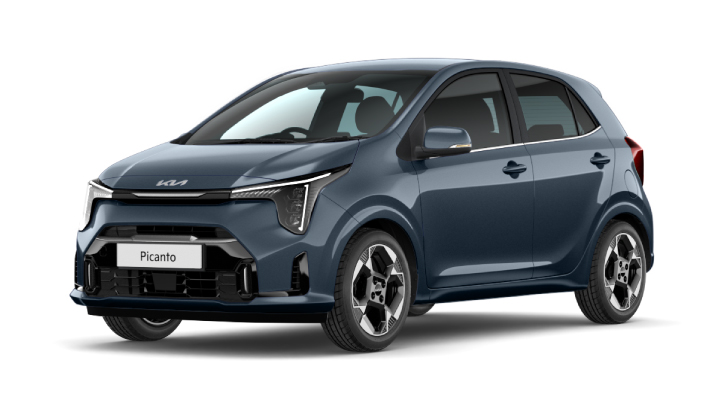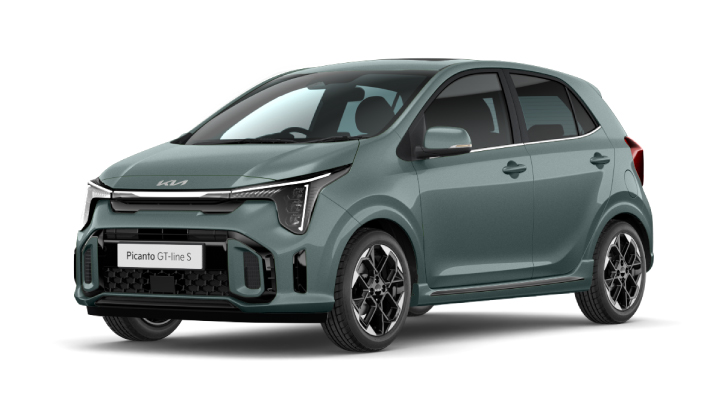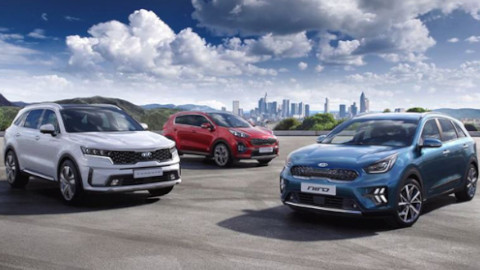
Introducing the New Kia Picanto

Introduced in 2004, the original Kia Picanto was a robust and functional alternative to other city cars that were on the market. Fast-forward to the present day, and the latest generation Picanto has clearly come on leaps and bounds, with a stylish design having been implemented throughout the whole car.
The latest entry into the Picanto family tree is more than just a pretty face though, because despite being a small car, it comes with grown-up driving manners and a host of other technologies that are usually found on larger cars.
As a result of the changes, the New Picanto is more accomplished than ever and punches well above its weight class. Keep on reading to discover more about Kia's award-winning city car.
Design and Practicality

The new Picanto is more sophisticated, and more stylish than ever before. It manages to offer a fresh approach to its design which fits in well with the sharp look adopted by the rest of the Kia range, with their new design language.
Elsewhere, practicality isn't usually a city car's strong suit, but Kia have done an exceptional job of maximising the space available inside the New Picanto.
For starters, each model across the range comes with five doors as standard, making access to the rear seats nice and easy. You can also fit a child's seat thanks to the addition of the ISOFIX anchor points in the back seats.
General room for passengers is good despite the New Picanto's modest size. With 255 litres to play with, the boot can easily carry your weekly food shop. Fold the rear seats down, and you get a smidgen over 1,110 litres of space at your disposal.
Technology and Safety

There's a wide range of New Picanto models to choose from, all of which come generously equipped as standard. For example, the standard equipment includes Apple CarPlay™ and Android Auto™, Rear parking sensors and reversing camera system, cruise control and Hill-start assist control.
As you move up the range you start to unlock enhanced features, such as larger alloy wheels, sharper styling and more safety and tech.
Of course, as standard, safety technology on the new Picanto is excellent and features:
- Automatic headlight control
- Rain sensing front wipers
- Rear parking sensors and reversing camera
- Forward collision avoidance
- Lane keep assist
- Anti-lock braking system with emergency stop signalling
- Hill-start assist control
Economy and Performance

The new Picanto comes with a choice of two peppy petrol engines. These come in the form of a 1.0-litre or larger 1.2-litre engine.
As expected, the larger 1.2-litre engine provides a nippier character, but being a city car, the Picanto is not really going after high performance claims.
Instead, economy is king, and is around the 50mpg mark for both engines, with the smaller 1.0-litre engine providing that little bit more.
To drive, the Picanto is an ideal city car, ideal for tight city streets. If longer distance is your thing, then the larger 1.2-litre will be more suited to your requirements.
New Picanto Models
Shadow
Key features:
- Automatic Headlight Control
- Silver Window Surround
- Heated Rear Window
- Automatic Defog System
- Luggage Net Hooks
- 8" Touchscreen Navigation
- Intelligent Speed Limit Assist
- Anti-Lock Braking System with Emergency Stop Signalling
2
Key features:
- Automatic headlight control
- High mounted brake lights and rear fog lights
- Body coloured bumpers, side sills, wheel arches and door mirrors
- Silver window surround
- Heated rear window
- Rain sensing front wipers
- Driver and front passenger seat adjustment (manual)
- Artificial leather, adjustable steering wheel
- Electric front and rear windows
- Air conditioning and automatic defog system
- 60:40 split folding rear seats
- Centre console with storage box and front, rear and luggage compartment lights
- 8-inch touchscreen navigation and 4.2-inch driver display screen
- Apple CarPlay™ and Android Auto™, and free 7-year Kia Connect
- Bluetooth® connection
- 1x USB-A for media connection
- 1x USB-C front passenger charging port
- 4-speaker audio system
- eCall system
GT-Line
Key features in addition/replacement to 2:
- 16-inch alloy wheels with ‘GT-Line’ styling
- ‘GT-Line’ exterior styling
- Gloss black door radiator grille
- LED headlights, LED daytime running lights and LED rear lights
- Electrically adjustable, heated and folding door mirrors with LED indicators
- Privacy glass for rear windows and tailgate
- ‘GT-Line’ interior styling
- Black cloth and artificial grey leather upholstery
-
- Rear passenger USB-A charging port
3
Key features in addition/replacement to GT-Line
- 16-inch alloy wheels
- Standard exterior styling
- Heated front seats
- Heated steering wheel
- Automatic air conditioning
- Start/stop button with smart entry system
- Wireless mobile phone charger
- Smart key with motion sensor
GT-Line S
Key features in addition/replacement to 3:
- 16-inch alloy wheels with ‘GT-Line’ styling
- ‘GT-Line’ exterior styling
- Gloss black radiator grille
- Sunroof with tilting/sliding function
- ‘GT-Line’ interior styling
- Alloy pedals and ‘GT-Line’ details
- Customisable ambient lighting
- Forward collision avoidance assist 1.5 – city, pedestrian, cyclist, junction turning
- Blind-spot collision avoidance assist
Test Drive the New Kia Picanto
As a well-rounded city car, the New Kia Picanto is hard to beat. Each model is stylish and comes with some eye-catching colours, while the classy interior feels more premium than the price tag would suggest.
With plenty of technology and an efficient range of engines, the New Picanto deserves consideration if you're in the market for a city car. Plus, let's not forget that 7-year/100,000 miles warranty.
If you wish to explore the New Picanto for yourself, then please contact your preferred Evans Halshaw Kia retailer today.


